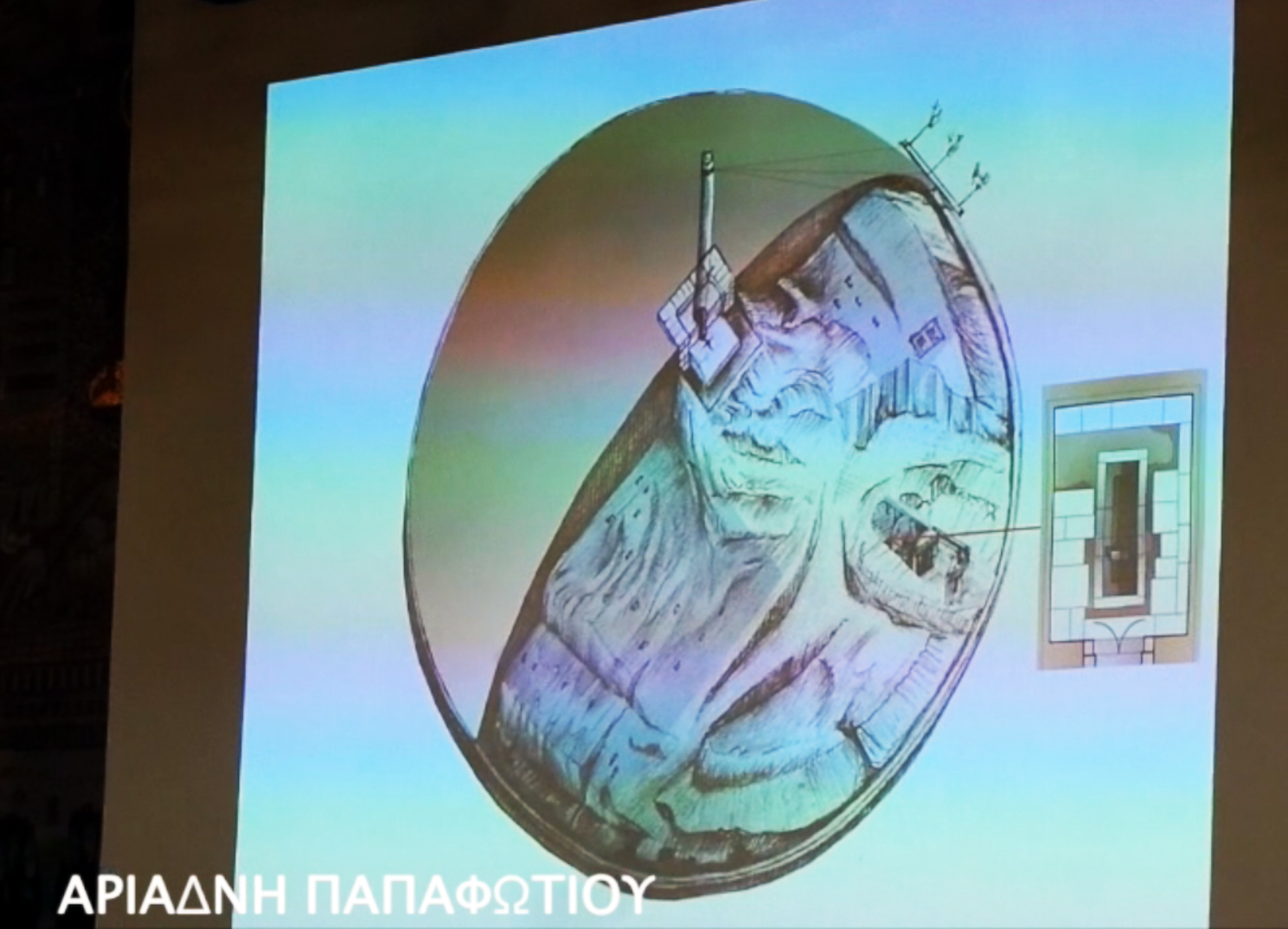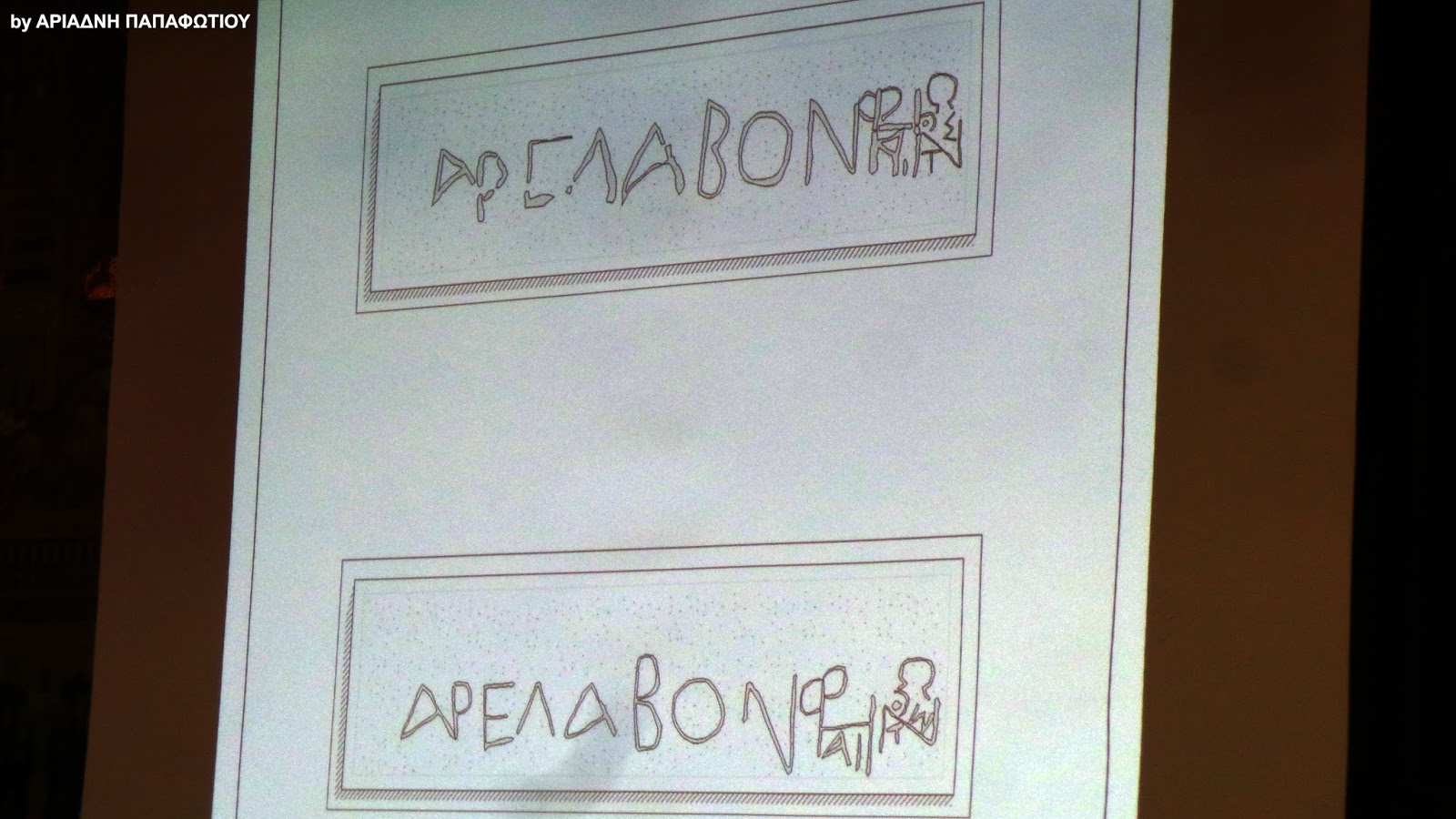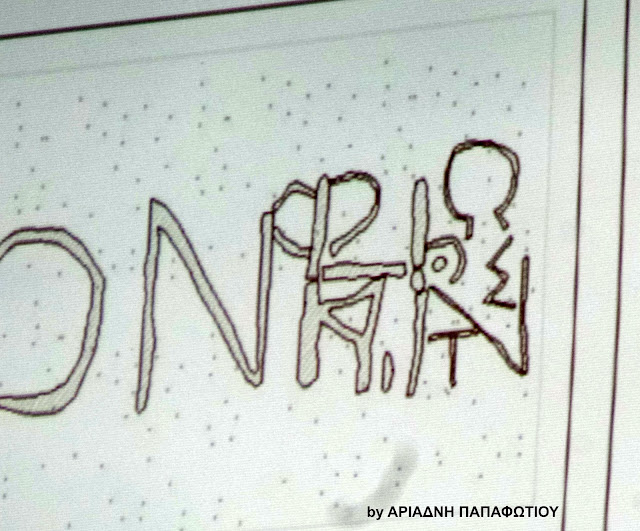There is a nice thesis where the use of this type of "ANT" during his reign is described. I attach 3 screen-shots from the thesis.
The monogram in question from the peribolos is No 23, from "Pan type" coins, appearing in the 3rd period of Gonatas reign (246 - 229 BC). If that monogram was introduced only then, they would have to explain how this ended up in a 4th century BC peribolos. Of course anyone could go mark the peribolos with anything, at any given time, but if that was the case, they would have discovered many more engravings and monograms.
I have trouble finding examples used in Monophthalmus reign. He apparently cut coins with the name of Alexander and 1-2 examples I found do not have the monogram found at the peribolos. The monogram is, however, found on Demetrius Poliorcetes coins, who, I assume, adopted it from his father:

So, if one looks at Gonatas and Monophalmus coinage would likely conclude that the peribolos monogram points to a 3rd century BC dating.
If one takes into account the Demetrius coins, maybe the 4th century BC dating is still not excluded. The question is then if that monogram is introduced from the 4th century BC, why it only appears in later coins from Gonatas.
It is also interesting to observe the various types of monograms on the first image. Some are quite strange and really suggest that the letter combination on the ΑΡΕΛΑΒΟΝ inscription is also likely a monogram.
The thesis I found the aforementioned information is here: http://discovery.ucl.ac.uk/1349335/1/340651.pdf





